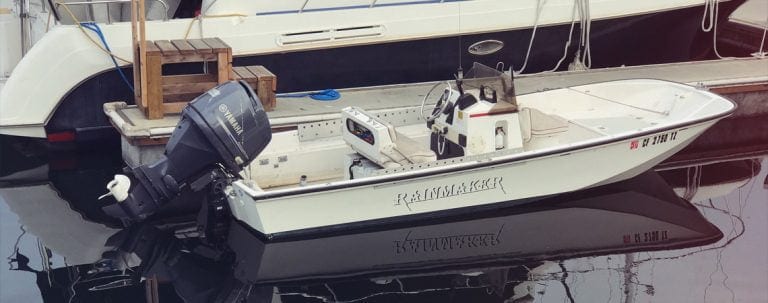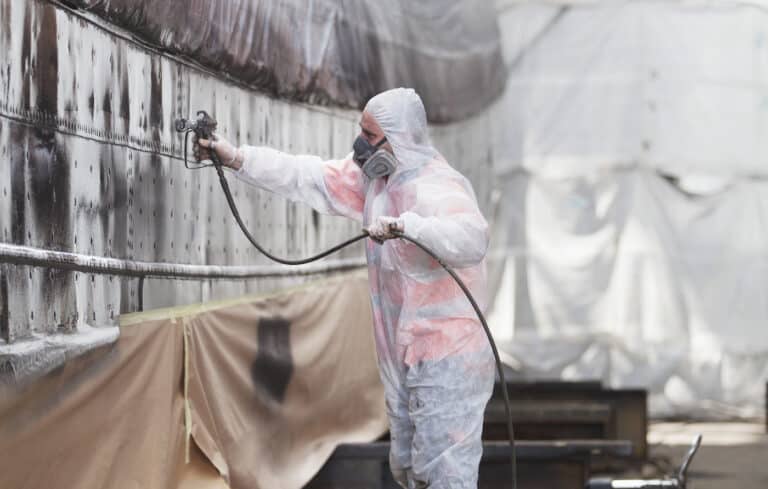Affiliate Disclosure: Some of the links in this post are affiliate links. As an Amazon Associate, we earn from qualifying purchases. Read our affiliate policy for more information.
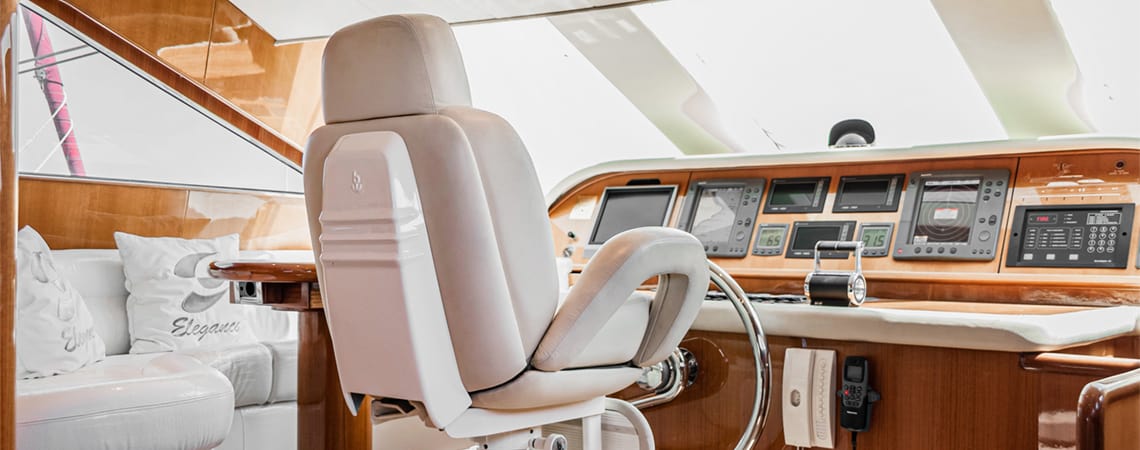
How to Clean Vinyl Boat Seats
In today’s guide, we are going to teach you how to clean vinyl boat seats.
Vinyl is a popular choice for boat seats due to its durability, water-resistance, and versatility in design. Its unique characteristics make it an ideal material to withstand the aquatic environment while providing comfort and style.
The challenge of cleaning vinyl is that it’s delicate and stains very easily. Damaging vinyl or making the stain worse is highly likely if you do not use proper tools and procedures for cleaning.
Well, once you are done with this guide, you will know the best way to clean vinyl boat seats without irreparably damaging them!
In This Article hide
- Care and Prevention is Key for Vinyl
- How to Clean Vinyl Boat Seats
- How to Clean White Vinyl Boat Seats
- How to Clean Vinyl Boat Seats of Mildew
- What Kind of Products Should You Clean & Maintain Vinyl Boat Seats With?
- Our Product Recommendations for Cleaning & Maintaining Vinyl
- How NOT to Clean Vinyl Boat Seats
- How to Clean Vinyl Boat Seats – Conclusion
Care and Prevention is Key for Vinyl
Fishing, sunbathing, and general use can lead to stains that not only damage the vinyl but also detract from the overall look of your boat. By keeping your boat seats clean, you ensure they remain attractive and inviting for every voyage.
It’s always easier to prevent mold and dirt with care rather than deal with them later.
If you neglect your vinyl seats for months, you may have to waste hours trying to get rid of mold or deep stains. But if you spend just a few minutes a week on vinyl seat care, then you will be saving hours and hours down the line.
Preventative care is fairly easy with vinyl boat seats. Among the things that you should do are:
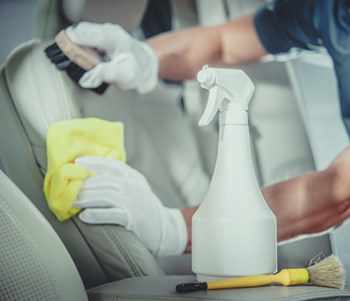
- Cover the seat when it’s not in use. This especially applies to boats left outdoors. Vinyl is delicate and is easily damaged by UV. Under the sun, not only will your vinyl seat’s gorgeous color fade, but the fabric itself will physically degrade.
- Ensure good ventilation. Your seat cover should be breathable to let moisture escape and prevent the formation of mold. Aside from that, the boat cover should be breathable too – for the same reason.
- Clean stains promptly. Vinyl is porous and readily absorbs anything that can be absorbed. This includes sunscreen, drinks, and food. Vegetation will color-stain vinyl too.
- Apply a protective coating to the vinyl. Treat the surface of the seat with a protective coating, like the 303 Aerospace Protectant. Protective coatings somewhat protect the vinyl from the exterior harsh environment and make cleaning and wiping easier.
You should preventatively wipe your vinyl seats maybe once every week or two. If you are boating often, then perhaps a wipe after each trip would be ideal as well.
How to Clean Vinyl Boat Seats
If you’ve failed with the prevention and now have to get rid of ugly colored stains, then this section will be able to help you. Below, you will find a few ways of cleaning vinyl seats without long-term damage to your precious fabric.
There are two types of cleaning procedures that you should know about – routine and deep cleaning. You should occasionally perform both to retain the pristine look of vinyl on your boat seat.

Routine Cleaning
Routine cleaning is fairly simple and can be done this way:
- Mix together 1 gallon of water and 1/4 cup of mild soap.
- Dip a soft cloth into the solution and wring it out a little.
- Wipe the vinyl cover in a circular motion, avoiding the pooling of the cleaning solution.
- Using fresh water with no soap and a clean cloth, rinse the vinyl and remove soap residue from it.
- Dry the vinyl seat with a soft & clean towel.
You should ideally perform this cleaning procedure after every trip, though once a week should be fine too. More frequent cleaning will not allow dirt to accumulate.
Deep Cleaning
Deep cleaning is performed:
- Mid-season.
- When you are preparing to put the boat away for the winter.
- After you take the boat out of storage in spring.
And here’s how deep cleaning is performed:
- Do a routine clean as outlined above. This is necessary so that you remove dirt, sunscreen, food, and any other messes remaining from regular use.
- Apply a vinyl cleaner to the vinyl fabric.
- Carefully rub the cleaner into the vinyl with a soft-bristled brush or a soft cloth.
- Remove cleaner residue with a soft cloth.
If there are any deep stains on your vinyl seats, then you may use alcohol wipes.
How to Clean White Vinyl Boat Seats
White vinyl seats, while giving your boat a pristine look, come with their own challenges. They are prone to visible stains and risk of discoloration, making it crucial to use appropriate cleaners and cleaning methods.
White vinyl seats are somewhat more challenging to clean because they are more delicate. Not only that, but since stains are more visible on white, you may want to clean white vinyl boat seats more often.
Generally, here’s how you should clean white vinyl boat seats:
- Prepare a mild cleaner designed for white vinyl boat seats. You should be able to find such a cleaner at a local supplies store.
- Dip a soft cloth into your cleaning solution and gently scrub the surface of the seat.
- Once you are done, rinse the vinyl with water.
As you could’ve noticed, this is the routine cleaning procedure we described earlier. The only difference is the cleaning product – to preserve white vinyl seats, you’ll have to be more careful with what you are using.
Deep cleaning is again done in the same way, but you need to make sure that your vinyl cleaner is intended for white fabrics. Otherwise, you may stain your beloved white vinyl seat.

How to Clean Vinyl Boat Seats of Mildew
Mold and mildew are the biggest enemies of vinyl. These form ugly black, grey, or yellow spots on your vinyl. Fortunately, they are fairly easy to treat.
Here’s how to clean marine vinyl fabric of mold and mildew:
- Get yourself a mold remover suitable for vinyl fabrics.
- Using a soft-bristled brush or soft cloth, gently scrub the solution into your vinyl seats.
- If necessary, wait for the mold remover to take effect.
- Remove mildew debris with a microfiber cloth.
For persistent mold and mildew, you might consider using a specialized enzymatic cleaner. These cleaners can break down mold and mildew at a microscopic level, eliminating them without damaging your vinyl fabric.
What Kind of Products Should You Clean & Maintain Vinyl Boat Seats With?
Vinyl is rather delicate, and you should be very careful when choosing a cleaning solution for this material.
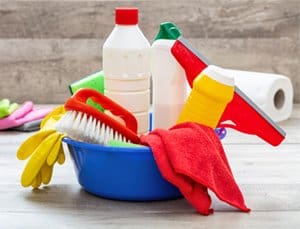
Generally, here is what works the best with vinyl seats:
- Mild soap and water. A solution of mild soap and water may be used to treat milder stains and residue of drinks, oils, and sunscreen. This is a great cleaning product since it’s safe for vinyl and is easy to make.
- Vinyl cleaners. Vinyl cleaners are highly effective at general cleaning, but they are optimal for deep cleaning.
- Alcohol wipes. These can fairly easily deal with deep stains.
- Vinyl protectants. Vinyl protectants are used for prevention rather than for cleaning. You should apply a vinyl protectant to your vinyl seats after cleaning to help retain their cleanness and add protection from outdoor elements.
TIP While a solution of mild soap and water can be effective, it’s important not to overdo it with the soap. Using too much soap can leave a residue that can be challenging to completely rinse off and can even attract more dirt to the surface.
Our Product Recommendations for Cleaning & Maintaining Vinyl
303 Products Marine & Recreation Multi-Surface Cleaner
The Multi-Surface Cleaner from 303 Products is intended for vinyl, fabrics, and metal. Specially formulated to treat tough stains, the Multi-Surface Cleaner is great for occasional deep cleaning sessions.
This vinyl cleaner leaves minimal residue on surfaces as well, so rinsing it should not be challenging at all.
The Multi-Surface Cleaner cannot degrease surfaces, but that’s fine since you should treat your seats with soap & water before using this thing anyway.
303 Products Marine & Recreation Aerospace Protectant
The Aerospace Protectant – again from 303 Products – allows you to apply a protective coat to your vinyl seats after cleaning. Aside from vinyl, this product is safe for carbon fiber, rubber, plastics, finished leather, and Plexiglas.
In terms of protection, the Aerospace Protectant contains UV blockers to prevent fading, cracking and premature aging from sun exposure. Aside from that, the Aerospace Protectant is also designed to restore lost color, though actual effects will vary depending on the condition of your vinyl seats.
How NOT to Clean Vinyl Boat Seats
Vinyl is a delicate material, so it doesn’t like harsh cleaning. You may think that strong chemicals or pressure washing will save you time, but they will actually damage your seat and force you to buy a replacement.
So, if you want to enjoy the comfort and appearance of your vinyl boat seat for quite some time, do NOT use the following cleaning methods and solutions:
- Power washing. Do NOT use any kind of streams of pressurized water to clean vinyl seats. Sure, you will most likely completely remove the dirt, but the issue is that the vinyl material will be destroyed as well.
- Harsh chemicals & household cleaners. Harsh chemicals like bleach, ammonia, or others will also destroy the pristine surface of the vinyl. Most household cleaners are too harsh for vinyl too, so using them to clean vinyl is a bad idea. This also includes vinegar, which is harsh but not effective for vinyl cleaning.
- Degreasers. Degreasers are bad for vinyl because they can easily weaken any vinyl protective coatings. Though protectants will wear out with time on their own, you don’t want to be actively contributing to their breakdown.
- Magic Eraser, Goo B Gone. Like degreasers, these products are also likely to remove protective coating from the surface of vinyl. Some people do use Magic Eraser on vinyl seats, and it can indeed work well, but you should be very careful with it.
Finally, what you also should NOT do is neglect your vinyl seats for months. Otherwise, you will have to deal with a thick layer of dirt and grease, and most likely, you will not even be able to restore the former look of the vinyl.
How to Clean Vinyl Boat Seats – Conclusion
Now, you know how to clean vinyl boat seats safely and effectively! However, remember that the best way to keep vinyl seats in a good condition is prevention and maintenance.
Do routine cleaning every week, and you will not have to deal with all those black spots and grease.
Thanks for reading, we recommend our other blog posts!
References
- EPA – Does ultraviolet (UV) radiation from UV lamps kill mold?
- University of Missouri – How to Prevent and Remove Mildew
Last update on 2024-04-30 / Affiliate links / Images from Amazon Product Advertising API
Disclaimers
All product names, logos, and brands are property of their respective owners. All company, product and service names used in this website are for identification purposes only. Use of these names, logos, and brands does not imply endorsement.
It is our policy to make every effort to respect the copyrights of outside parties. If you believe that your copyright has been misused, please provide us with a message stating your position and we will endeavor to correct any misuse immediately.
Some of the links in this post are affiliate links. As an Amazon Associate, we earn from qualifying purchases. This means if you click on the link and purchase the item, we may receive an affiliate commission, at no extra cost to you. This helps us keep this website alive. Learn more here.
Amazon Disclosure
DesperateSailors.com is a participant in the Amazon Services LLC Associates Program, an affiliate advertising program designed to provide a means for sites to earn advertising fees by advertising and linking to Amazon.com. As an Amazon Associate, we earn from qualifying purchases. Amazon and the Amazon logo are trademarks of Amazon.com, Inc., or its affiliates.
Please refer to our Privacy & Affiliate policy for more details.


